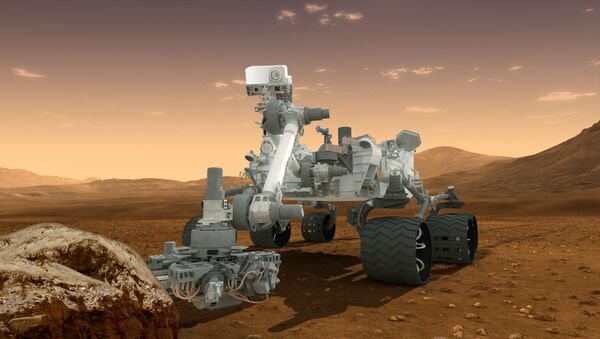The two images were snapped by the Mars rover’s mast camera on June 5, about 75 minutes after sunset. Both were released to the public on Monday.
When split, one image shows a distant Earth, and the other photo contains Venus, along with a portion of the rocky Martian feature known as Tower Butte that can be spotted in the image’s bottom left corner.

Tower Butte, a rock formation within the Gale Crater, sits in the “clay-bearing unit” which has been the site of Curiosity’s exploration for more than a year, according to NASA.
In a recent news release regarding the photos, NASA indicated that the images were captured by the rover in an effort to “gauge the twilight brightness” on the red planet, since this time of year typically sees an uptick in dust particles in the air as a result of Mars’ dust storm season.
However, had there been a significant decrease in the amount of dust when the images were taken, both planets would have appeared “like very bright stars.”
“Even moderately bright stars were not visible when this image of Venus was taken,” Mark Lemmon, an investigator assigned to the rover’s mast camera team, said in a statement accompanying the release. “Earth also has bright twilights after some large volcanic eruptions.”
Since its deployment to Mars, NASA’s rover has managed to capture dozens of impressive images, some which include shots of passing asteroids, a blue-tinged Martian sunset and even the smallest planet within our solar system, Mercury.
However, unlike in the Monday release, the rover previously managed to obtain another group of images in 2014 that showed a much brighter Earth lighting up the Martian night sky. The 2014 pictures were taken 80 minutes after sunset in January.
Although Curiosity is the only active rover plugging away on Mars presently, it’s expected to be joined by the Perseverance rover sometime in February 2021. The Perseverance is due to launch in July from Florida’s Cape Canaveral Air Force Station.



